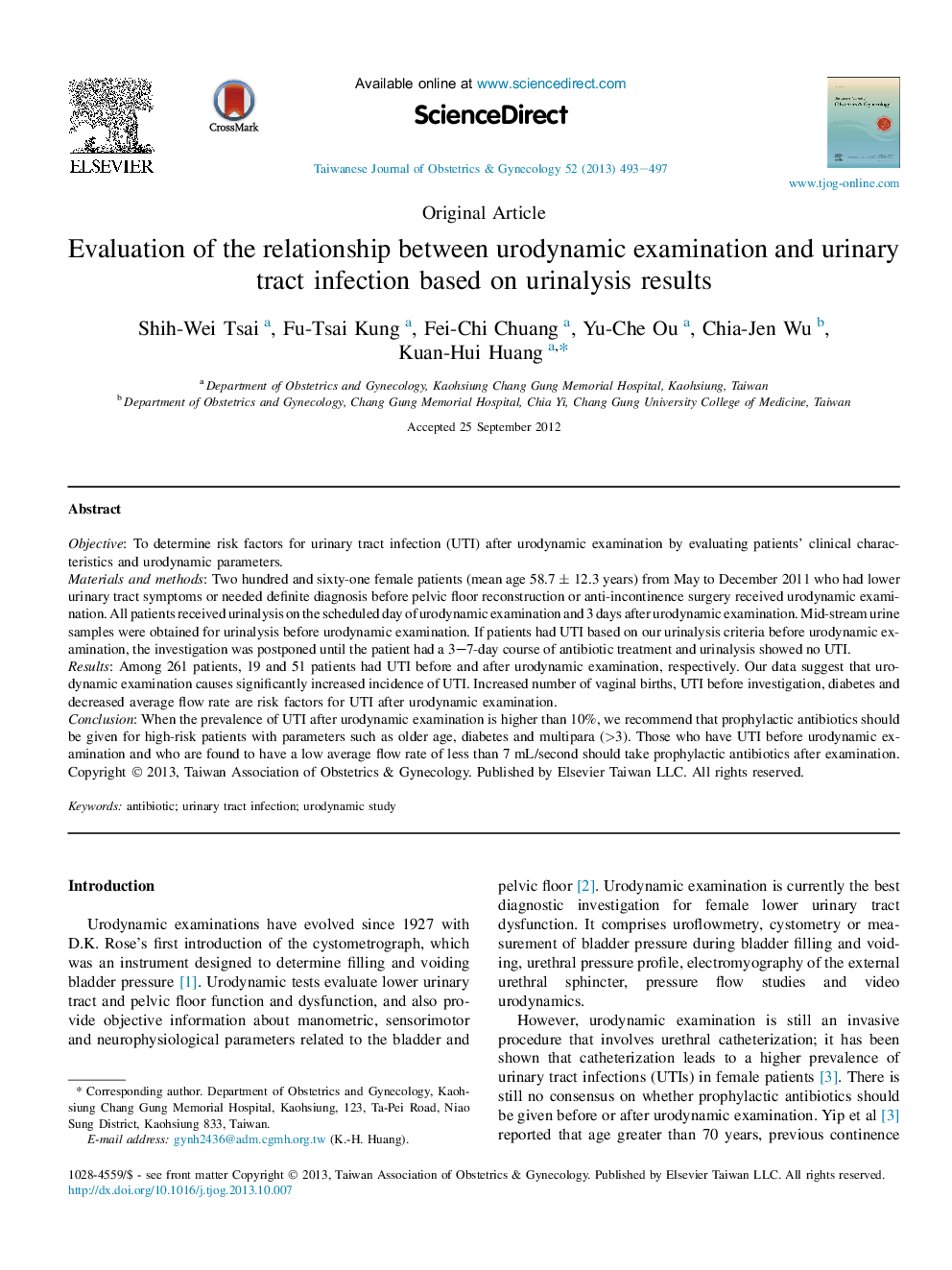| Article ID | Journal | Published Year | Pages | File Type |
|---|---|---|---|---|
| 3975277 | Taiwanese Journal of Obstetrics and Gynecology | 2013 | 5 Pages |
ObjectiveTo determine risk factors for urinary tract infection (UTI) after urodynamic examination by evaluating patients' clinical characteristics and urodynamic parameters.Materials and methodsTwo hundred and sixty-one female patients (mean age 58.7 ± 12.3 years) from May to December 2011 who had lower urinary tract symptoms or needed definite diagnosis before pelvic floor reconstruction or anti-incontinence surgery received urodynamic examination. All patients received urinalysis on the scheduled day of urodynamic examination and 3 days after urodynamic examination. Mid-stream urine samples were obtained for urinalysis before urodynamic examination. If patients had UTI based on our urinalysis criteria before urodynamic examination, the investigation was postponed until the patient had a 3–7-day course of antibiotic treatment and urinalysis showed no UTI.ResultsAmong 261 patients, 19 and 51 patients had UTI before and after urodynamic examination, respectively. Our data suggest that urodynamic examination causes significantly increased incidence of UTI. Increased number of vaginal births, UTI before investigation, diabetes and decreased average flow rate are risk factors for UTI after urodynamic examination.ConclusionWhen the prevalence of UTI after urodynamic examination is higher than 10%, we recommend that prophylactic antibiotics should be given for high-risk patients with parameters such as older age, diabetes and multipara (>3). Those who have UTI before urodynamic examination and who are found to have a low average flow rate of less than 7 mL/second should take prophylactic antibiotics after examination.
